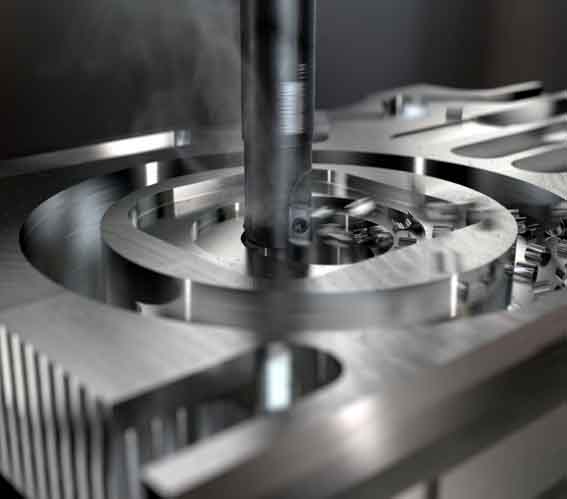Til CNC-bearbejdning af aluminiumsdele med stor margin (stor, tyndvæggede, hulrumsdele i aluminium), for at få bedre varmeafledningsforhold under bearbejdningsprocessen og undgå varmekoncentration, symmetrisk bearbejdning bør anvendes under bearbejdning. Hvis der er en 90 mm tyk aluminiumsplade, der skal bearbejdes til 60 mm, hvis den ene side er fræset, den anden side skal fræses straks, og fladheden kan kun nå 5 mm efter forarbejdning til den endelige størrelse ad gangen;
If using repeated feed symmetrical processing, each side is processed twice to the final size, and the flatness can be guaranteed to reach 0.3mm.
2. If multiple cavities are processed on aluminum alloy sheet parts, it is not advisable to use the sequential processing method from one cavity to one cavity during processing. This will easily cause the parts to be deformed due to uneven force. Multi-layer processing is adopted, and each layer is processed to all cavities at the same time as possible. Then process the next layer of all cavities to make the parts evenly stressed and reduce deformation.
3. Reduce cutting force and cutting heat by changing the cutting and milling thickness. Among the three elements of cutting amount, milling thickness has a great influence on cutting force. If the machining allowance is too large, the cutting force of one pass is too large, which will not only deform the parts, but also affect the rigidity of the machine tool spindle and reduce the durability of the tool. If the thickness of the milling is reduced, the production efficiency will be greatly reduced. Imidlertid, high-speed milling in CNC machining can overcome this problem. While reducing the depth of milling, as long as the feed is correspondingly increased and the speed of the machine tool is increased, the cutting force can be reduced while ensuring the processing efficiency.
4. The cutting sequence of milling should also be paid attention to. Rough machining emphasizes the improvement of machining efficiency and the pursuit of removal rate per unit time. Generelt, up-milling can be used. Det er, the excess material on the surface of the blank is removed at the fastest speed and the shortest time, and the geometric contour required for finishing is basically formed. The emphasis of finishing is high precision and high quality, and down milling should be used. Because the cutting thickness of the cutter teeth gradually decreases from the maximum to zero during down milling, the degree of work hardening is greatly reduced, and at the same time the degree of deformation of the parts is reduced.
5. The deformation of thin-walled workpieces due to clamping during processing is unavoidable even after finishing. In order to minimize the deformation of the workpiece, the pressing piece can be loosened before the finishing process reaches the final size, so that the workpiece can be restored to its original shape freely. Then lightly compress it to the extent that it can just clamp the workpiece, so that the ideal processing effect can be obtained. In short, the point of action of the clamping force is best on the supporting surface, and the clamping force should act in the direction of good rigidity of the workpiece. Under the premise of ensuring that the workpiece is not loose, the smaller the clamping force, the better.
6. When machining aluminum parts with a cavity, try not to let the milling cutter plunge directly into the part like a drill. Som resultat, the chip holding space of the milling cutter is not enough, the chip removal is not smooth, and the parts are overheated, expanded, and the tool collapses and breaks. Først, drill the hole with a drill of the same size as the milling tool or one size larger, and then mill with the milling tool. Alternatively, the CAM software can be used to produce the spiral cutting program. The main factor that affects the processing accuracy and surface quality of aluminum parts is that deformation is prone to occur during the processing of such parts, which requires operators to have certain operating experience and skills.

CNC-bearbejdning af store hulrumsdele i aluminium
 English
English العربية
العربية 中文(漢字)
中文(漢字) Čeština
Čeština Dansk
Dansk Nederlands
Nederlands Suomi
Suomi Français
Français Deutsch
Deutsch Italiano
Italiano 日本語
日本語 ಕನ್ನಡ
ಕನ್ನಡ 한국어
한국어 Português
Português Русский
Русский Slovenčina
Slovenčina Español
Español Svenska
Svenska Türkçe
Türkçe

